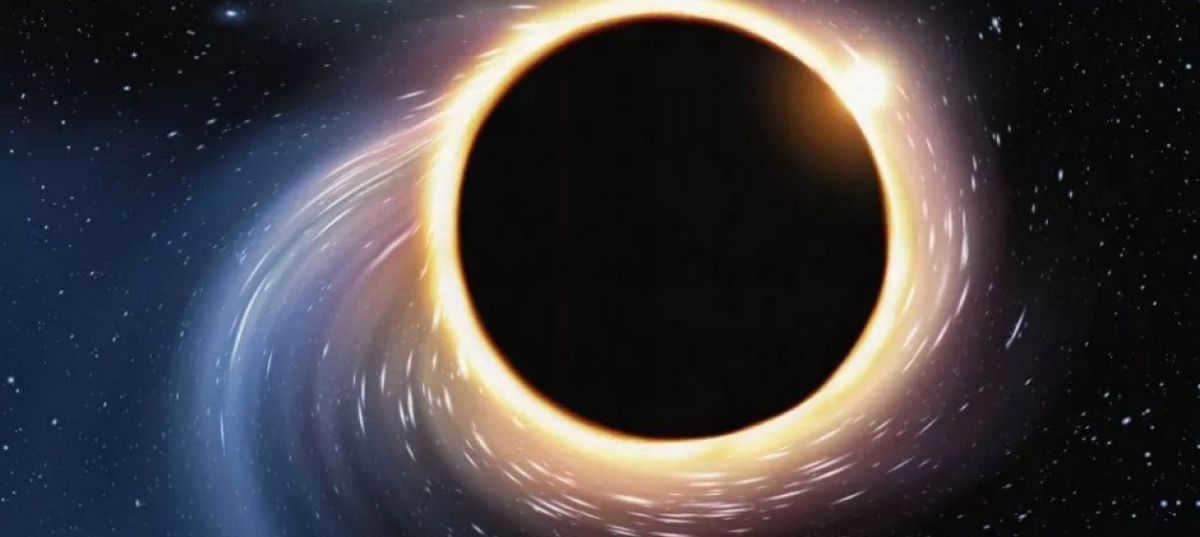
When it comes to the center of a black hole, conventional wisdom tells us about the singularity – an incredibly tiny and densely packed point where matter is compressed to its maximum and our understanding of space-time breaks down completely. However, what if this widely accepted notion is not entirely accurate? Are there any other possibilities for what could be at the heart of a black hole? In this article, we will explore a few intriguing alternatives to the singularity.
Planck stars
Let’s imagine a scenario where matter cannot be compressed to an infinitesimal point at the center of a black hole. In this case, there might exist an alternative smallest configuration of matter.
This alternative configuration is known as a Planck star and is based on the theory of loop quantum gravity. According to this theory, space and time are quantized, meaning they are composed of tiny cells. These cells are incredibly small, making the entire universe resemble a notebook within a quantum-level cell. Due to their minuscule size, our movements and the world around us appear continuous and fluid, rather than composed of individual cells. It’s similar to the pixels on a high-quality screen – although they are too small to see, they are still present.
What benefits does this theory offer? It brings two intriguing advantages. Firstly, it ultimately brings physicists closer to their grand quantum aspiration, which is to elucidate the nature of gravity. Secondly, it eliminates the chance of any singularities existing within black holes.
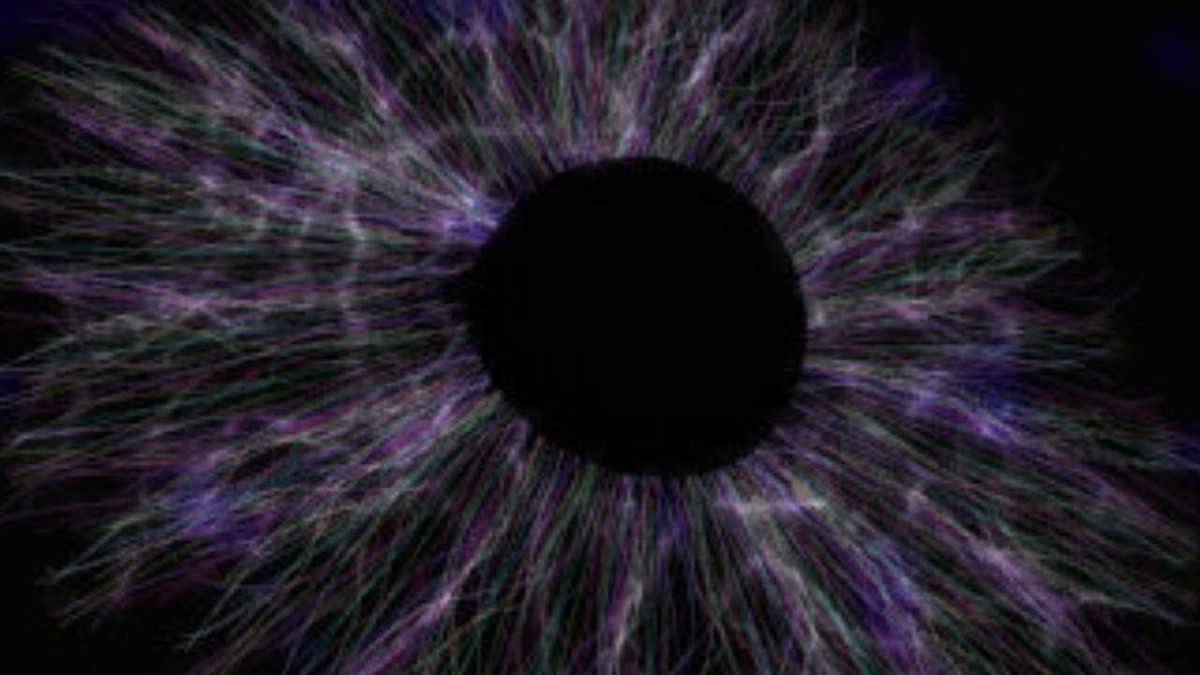
During the process of stellar collapse, gravity causes matter to be compressed, encountering a certain level of resistance. The degree of compression correlates with the strength of this resistance. If loop quantum gravity’s assertion that spacetime is discretized holds true, then matter cannot compress beyond the Planck length (approximately 1.68×10 -35 meters). Consequently, all the matter within a black hole is condensed into a small sphere. While this sphere remains minuscule and confined to the microcosm, it still surpasses the singularity in size.
Gravastars
Gravastars are a possible alternative to singularities (don’t worry, it doesn’t rely on unproven quantum theories). This term is so theoretical and almost non-existent that Word even underlines it as a misspelled word because it can’t figure out what it even says. Think of it as a black hole, but with its own peculiarities.
The main distinction between a gravastar and a black hole is that instead of a singularity, it contains dark energy within. If you’re too lazy to click on that amazing orange link, dark energy is a hypothetical substance that exists in the universe and causes it to expand. It may sound like something out of science fiction, but recent studies on relic radiation strongly suggest its existence.
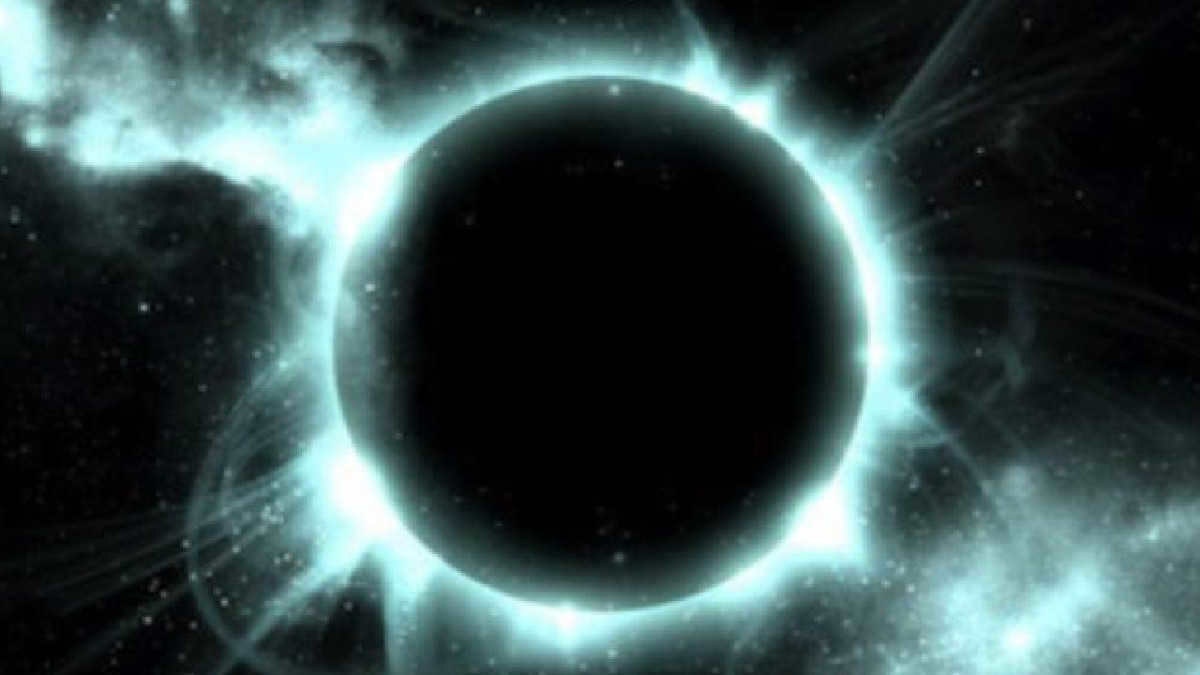
Once inside a gravastar, matter is unable to penetrate beyond the event horizon due to the presence of dark energy. As a result, it remains confined to the surface. Nevertheless, from an external perspective, gravastars appear and behave similarly to ordinary black holes.
This concept is likely far removed from reality, as the observation of black hole mergers through the detection of gravitational waves provides strong evidence against the existence of gravastars. The merger of gravastars would produce a distinct signal. Earth’s scientific instruments are continuously gathering an increasing number of examples of black hole mergers, while no evidence of gravastar mergers has been found. Although it cannot be definitively stated that gravastars do not exist, their existence is highly doubtful.
Let’s go for a spin
Planck stars and gravastars might seem like very clever concepts, but they remain purely speculative. Therefore, we must attempt to elucidate the phenomena occurring at the core of a black hole using a more realistic approach based on modern physics and our understanding of the cosmos.
The notion of a singularity residing within a black hole originated during a period when it was believed that these objects were stationary, non-rotating, and rather unremarkable. However, contemporary understanding reveals that black holes are far more captivating than previously imagined.
Through the rotation of the black hole, the singularity is drawn into a circular shape. Assuming we accept the calculations of Einstein’s general theory of relativity (since we don’t have any alternative calculations), any matter that passes through this circular shape enters the wormhole and emerges on the opposite side through a white hole. For those who are too lazy to click the link, let me clarify: a white hole is essentially the opposite of a black hole, where nothing can enter but everything exits at the speed of light. If this scenario is indeed true and white holes do exist, this method of transportation could potentially allow for travel to various regions of the universe. However, it is currently unclear how one would return in such a scenario.
However, encountering the issue of returning is not the sole concern when it comes to such interstellar journeys. The initial and most apparent obstacle is the inevitable tearing apart that would occur. Another obstacle that may arise is the potential of ending up in an entirely different universe, which would undoubtedly present challenges in terms of communication with our world.
If these obstacles seem far-fetched, here’s another one that has the potential to completely dismantle the idea of traveling through a black hole. The primary complication of a rotating black hole lies in its rotation. As a result, a rapidly spinning singularity would generate an incredibly strong centrifugal force. According to the theory of general relativity, such intense centrifugal forces would act as antigravity, repelling matter instead of attracting it.
Despite the fact that the theory of inner horizons suggests that it is impossible to travel through these “wormholes,” rotating black holes still exist in the Universe. This implies that the calculations of the OTO theory are incorrect, and there are certainly some unknown variables missing in the equation.
So, what is truly happening at the core of a black hole? We have no knowledge of that. However, the unfortunate aspect of this is that we may never acquire such knowledge.
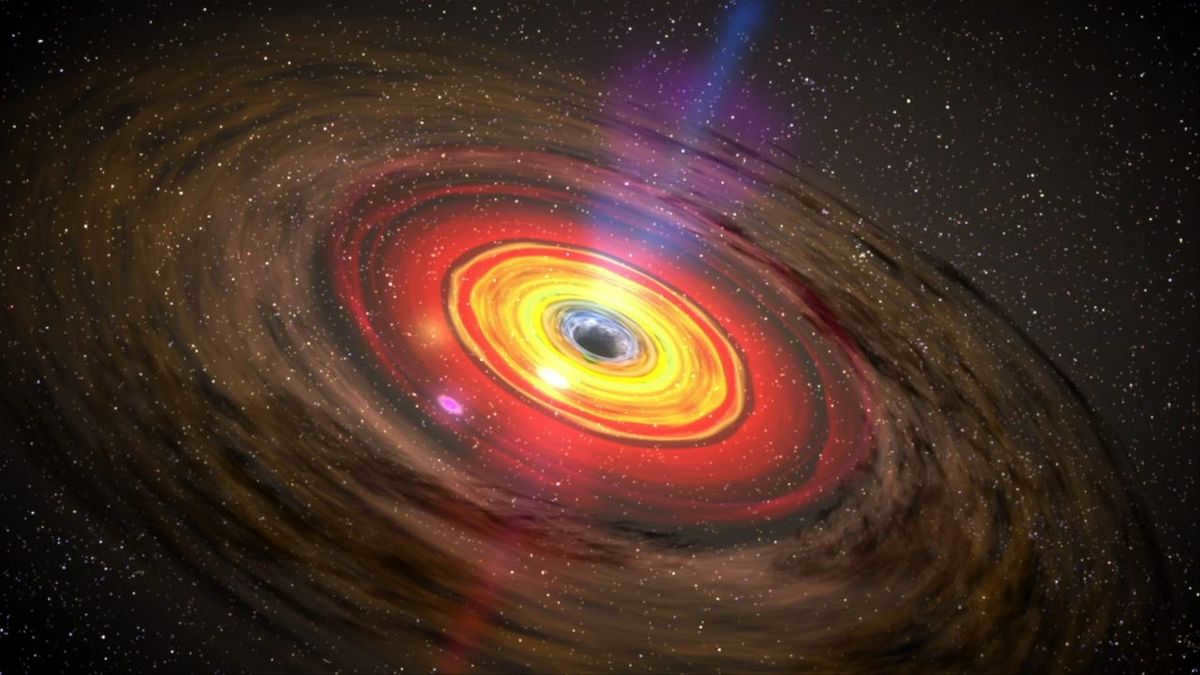
The singularity located in the center of a black hole is the area where matter compresses into an extremely small point, and all concepts of time and space cease to exist. However, it should be noted that the singularity is not actually real. There must be something else to take its place, although we are uncertain as to what that might entail.
Now, let’s consider a few possibilities.
Deep within the depths of a black hole, it is possible that matter does not compress into an infinitely small point. Instead, it is hypothesized that the smallest possible form of an object, known as a Planck’s star, may exist in this region.
This concept of a Planck’s star arises from the theoretical framework of loop quantum gravity, a highly speculative idea aimed at explaining the quantum nature of gravity. Within the realm of loop quantum gravity, space and time are thought to be quantized, meaning that the fabric of our universe is composed of discrete, tiny components. However, these components are so minuscule that our everyday movements appear continuous and fluid.
Other articles you might be interested in:
There are two significant benefits that arise from this conceptual division of spacetime. Firstly, it provides a logical resolution to the conundrum of quantum mechanics, offering a comprehensive explanation for gravity. Secondly, it effectively eliminates the occurrence of singularities within the confines of black holes.
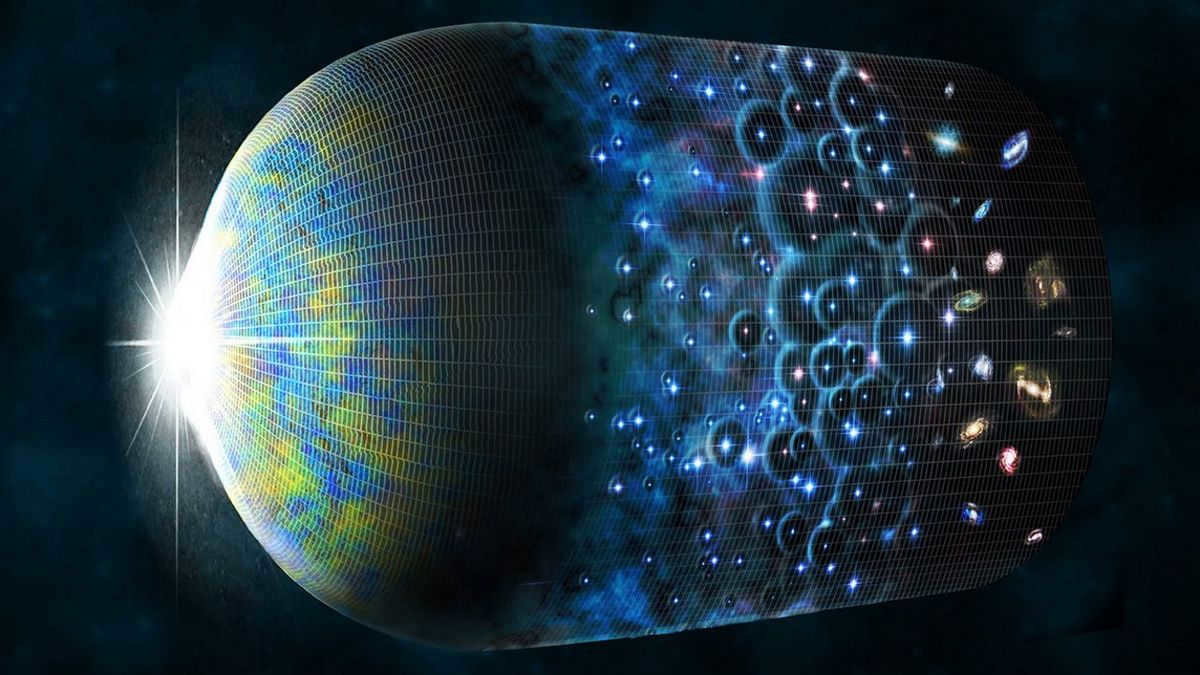
When an enormous gravitational force causes matter to become compressed, it encounters resistance. The discretization of spacetime prevents matter from reaching anything smaller than the Planck length (which is approximately 1.68^10 -35 meters, so … it’s actually a minuscule object). The entirety of the material that enters a black hole is compressed into a sphere with a diameter not much larger than the value of the Planck length. It is completely microscopic, but certainly not infinitely small.
The material’s resistance to ongoing compression ultimately halts the formation of a black hole. Moreover, due to the profound time dilation effects in the vicinity of black holes, from our perspective in the outer cosmos, this progression unfolds over countless billions or even trillions of years.
There is a new attempt to replace the singularity, which does not rely on unproven theories of quantum gravity. This alternative is known as a gravastar and it is such a theoretical concept that even my spell checker did not recognize the word.
The main difference between a black hole and a gravastar is that instead of a singularity, a gravastar is filled with dark energy. Dark energy is a substance that permeates space-time and causes it to expand. This may sound like something out of science fiction, but it is actually real: dark energy is currently causing the entire universe to expand at an accelerating rate.
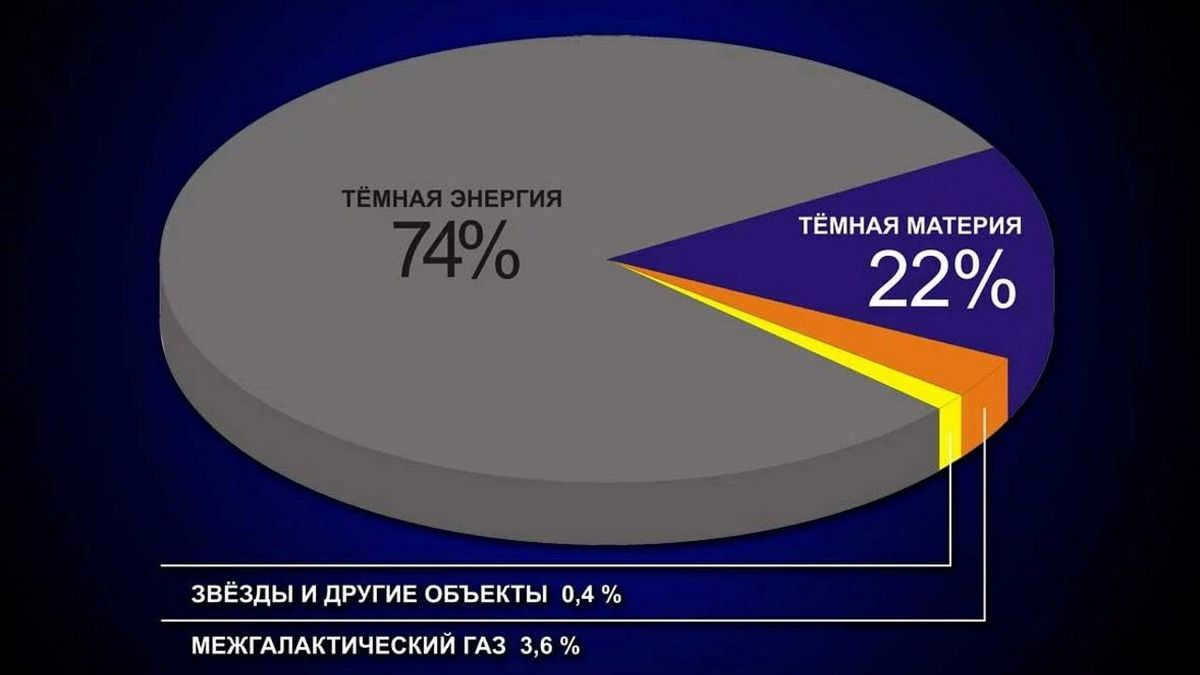
When matter encounters a gravastar, it is unable to penetrate past the event horizon due to the presence of dark energy. Instead, it remains suspended on the surface. However, beyond the surface, gravastars exhibit similar characteristics and behavior to regular black holes.
Nevertheless, recent observations of black hole mergers using gravitational wave detectors suggest that gravastars may not exist. This is because the signal emitted during a gravastar merger would differ from that observed during a black hole merger. Devices such as LIGO and Virgo are consistently discovering more instances of black hole mergers, further challenging the existence of gravastars. While not completely ruled out from our universe, gravastars are certainly on precarious ground.
What about the rotation?
Planck stars and gravastars may have fascinating names, but their existence is uncertain. Perhaps there is a more practical explanation for singularities, based on a nuanced and realistic perspective of black holes in our universe.
The concept of a singular point with infinite density arises from our understanding of static, non-rotating, uncharged, and frankly unremarkable black holes. However, actual black holes are far more captivating entities, particularly when they exhibit rotation.
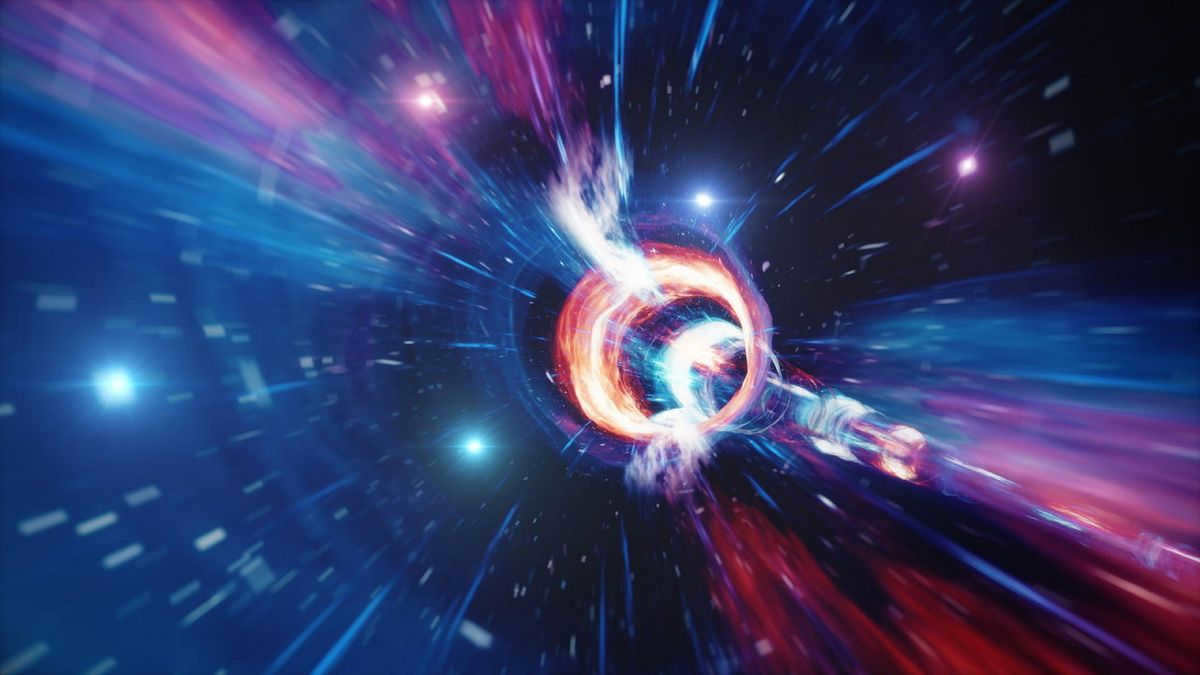
The singularity within a rotating black hole is drawn into a circular shape due to the gravitational force. As per Einstein’s theory of general relativity, once you cross the circular singularity, you will enter a wormhole and emerge from a white hole (which is the complete opposite of a black hole, where matter is expelled at the speed of light but nothing can enter) into a completely different and thrilling part of the universe.
Nevertheless, there is a complication: the internal structure of rotating black holes is extremely unstable.
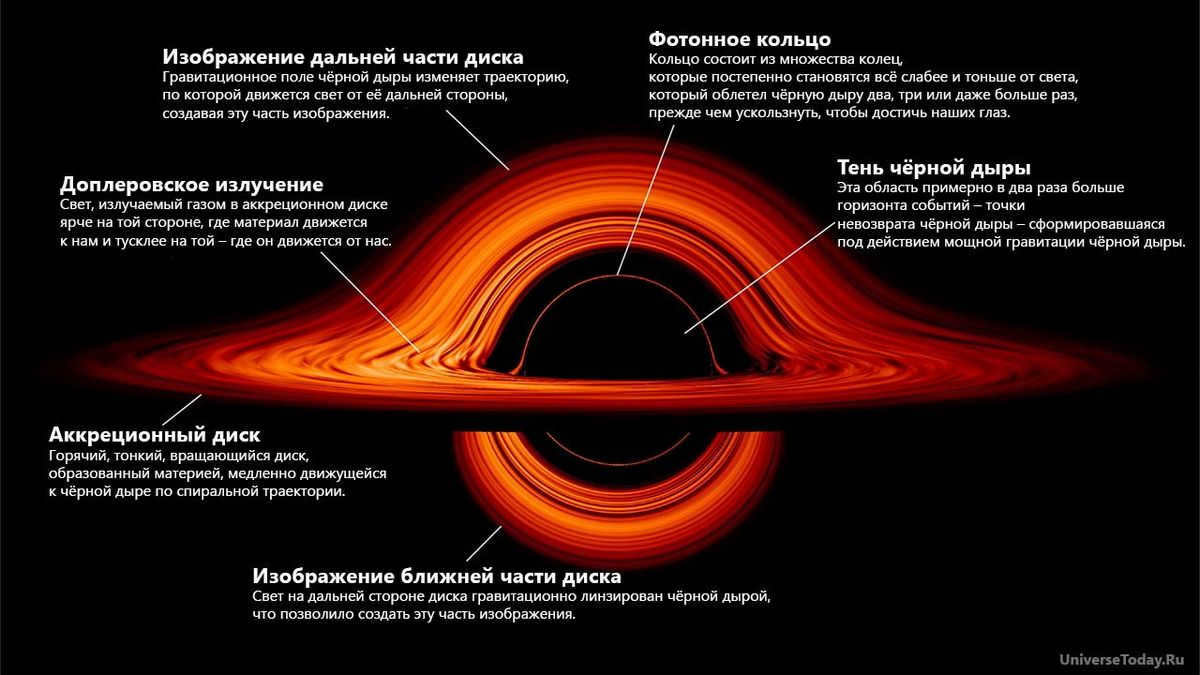
This results in the creation of a boundary within the black hole known as the inner horizon. Beyond this zone, radiation is drawn towards the singularity as a result of its intense gravitational pull. However, the antigravity produced near the annular singularity pushes the radiation back out, with the inner horizon serving as the turning point. If one were able to observe the inner horizon, they would be met with an impenetrable wall of infinitely powerful radiation, accumulated throughout the history of the universe and thrust upon them in an instant.
The formation of the inner horizon would cause the black hole to disintegrate. However, rotating black holes undeniably exist in our universe, indicating that our current theories are incorrect.
What truly occurs within a black hole remains a mystery. The unsettling truth is that we will never be able to uncover it.

Hello, I’m the creator and administrator of UniverseTodayRu. My interests revolve around the fields of astronomy, physics, and mathematics. I completed my studies at the Pushkin BrSU’s Faculty of Physics and Mathematics in 2010. For my observations and photography, I make use of the Sky-Watcher BK 909EQ2 and Canon EOS 1100D. During my leisure time, you can often find me gazing at the stars, contemplating the mysteries of the universe. In addition to the exact sciences, I also have a keen interest in anything related to software and information technology.
You might also find this interesting.
A team of astronomers has recently made a groundbreaking discovery by identifying the most luminous quasar ever observed in the early universe.
Scientists have made an astonishing breakthrough by detecting the presence of a key component of life in a sample taken from the asteroid Ryugu.
A remarkable phenomenon took place in Canada when a double asteroid collided, resulting in the formation of this impressive crater.
The Mars rover, Curiosity, has made an extraordinary find by uncovering ancient organic molecules on the Red Planet.
These unusual planets could be composed of exotic substances.
There are countless black holes lurking within our galaxy!
5 Comments about “The Phenomenon at the Heart of a Black Hole”
There exist various interpretations of the notion of VACUUM and none of them explicitly states what you assert in the final sentence of your article. In my view, your entire publication is replete with perplexing statements that contradict each other. For instance, right at the beginning, it is mentioned that a neutrino lacks both charge and mass, yet towards the end, you propose that a black hole is comprised of an incredibly vast number of neutrinos. According to this, it follows that these black holes should have no mass… At school, we are provided with inaccurate information about VACUUM, deliberately discouraging any questioning of the established truths of the present time. How can we conceive of a Space on any scale devoid of matter in any form? In the absence of matter, fields, particles, energy quanta, photons, and so forth, space itself appears to “collapse” – albeit only in our imagination – transforming into nothingness. This is not physics, but rather philosophy! Response
What you have portrayed here is complete nonsense. A black hole is one of the spiraling galaxies’ hyperboloid rotation funnels. For instance, the southern one. It acts as a powerful sucking vortex. On the other hand, the northern vortex is called a Balge, and it functions as a white hole. The hyperboloid of rotation, also known as a cosmic tornado, spins at a velocity that surpasses the speed of light, causing photons to swirl and become invisible to us. Moreover, the rotation of the hyperboloid generates neutron stars, which are pushed into the northern vortex. Perhaps this is something that you, gentlemen of unlearners, would be interested in learning. Reply
Conversations about the existence of funnels and hyperboloids of rotation are pointless, just like discussions about obscure poles. It is akin to believing in the “Higgs bazon”, which is a temporary elementary particle! Reply
Neutrinos are not what they seem to be! A NEUTRINO is simply a coiled primary field, devoid of mass and charge, and when combined with energy (such as photons, which also have zero rest mass), it forms matter itself. Therefore, the initial approach to the theory, as well as the practice, is fundamentally flawed. The key to solving many, if not all, problems lies in recognizing that NEUTRINO is a curled up piece of the primary field, similar to the balls in the Lattice theory. By delving deeper into this “neutrino is a piece of primary field” theory, we can gain insights into the presence, effects, and interactions of other known forces, force fields, and nuclear interactions.
The two stable particles are the photon and the neutrino. The photon has zero mass but possesses energy, while the neutrino has zero mass and zero energy.
The neutrino is a component (or piece) of space (or the primary field) that moves within the larger space and retains all its properties. When it acquires energy, it can condense into muons and other particles. The existence of various types of neutrinos indicates their informational nature, allowing us to determine their origins and construct informational structures and elements anywhere in the universe.
A photon is a concentrated form of moving energy, and multiple photons create a field in space by “screwing” into it. A small fraction of the photon’s energy is lost, causing it to cool down.
Protons, neutrons, and electrons are relatively stable particles that are formed by the combination of energy and space (i.e., photons and neutrinos) in various proportions. These particles bind together to create atoms, chemical elements, and matter, each with its own unique properties. Protons, neutrons, and electrons represent the most stable combinations based on the minimum energy and space requirements, although they can still decay over time, ultimately transforming into energy (photons) and bits of the field (neutrinos).
The primary vacuum was initially homogeneous in time and space in all directions. However, due to the curvature of space, regions with higher energy emerged, resulting in a change in the structure of space. This led to the formation of the primary energy and the first point of curled curved space, which we now refer to as a neutrino. This neutrino then triggered a chain reaction, giving rise to the creation of photons and neutrinos throughout the vacuum. We cannot determine the exact quantitative proportions of these space elements, but the result is the entire visible and invisible universe that surrounds us. Furthermore, the presence and influence of NEUTRINOs in the atomic nuclei of various elements can explain other puzzles in classical physics. These include substances with phase transitions (e.g., segmentoelectrics, dielectrics, diamagnetics, magnetics) and thermodynamic processes, all of which are affected by neutrinos and their ability to induce entropy (i.e., the non-uniform arrangement and motion of particles).
Entropy is a function in physics that establishes the relationship between macro- and micro-states. It is the only function that indicates the directionality of processes. Entropy depends solely on the initial and final positions of the system, rather than the transition between states.
Neutrinos also play a role in the theory of magic nuclei, including Helium, Oxygen, Calcium, Tin, Lead, Uranium, and Thorium.
Interestingly, all the constants in physics are influenced by the presence of the coiled primary field clot – NEUTRINO – in all atoms, poisons, and matter.
The so-called Higgs Boson, along with other bosons, is not actually a particle but rather an elementary transient process. It cannot be “held” in the traditional sense. Nevertheless, all processes involving the Higgs Boson, like other nuclear reactions, result in the production of neutrinos. Therefore, it is essential to study the interaction, formation, and significance of neutrinos in the construction of matter.
Lastly, nuclear energy (or atomic energy) refers to the energy contained within atomic nuclei, released during nuclear reactions. Bonding energy, which is the energy required to separate a nucleus into individual nucleons, plays a role in these reactions. The presence and influence of neutrinos are crucial in determining this bonding energy, as excess neutrinos are released during these reactions. The most recent theory regarding black holes suggests that they are clusters of neutrinos, which are massive quantities of the curled primary field. These neutrino clusters behave according to the field, absorbing everything and transforming back into the primary field, effectively returning to a vacuum state. Hence, everything originates from nothing and ultimately returns to nothing – VACUUM! Reply
The cosmos, also known as the final frontier, holds many mysteries. One such mystery is the nature of the very center of a black hole. Have you ever wondered what lies within? Fortunately, modern science has the ability to provide answers to this question.

Our Understanding of the Universe
At present, the technological progress of human civilization is relatively primitive when compared to the vastness of the cosmos.
- Traveling to the neighboring star, Alpha Centauri, is currently beyond the capabilities of any living individual, thus making the exploration of outer space incredibly challenging.
- All of our knowledge about distant stars and planets is derived from observations made using telescopes and particle detectors.
- Observations provide valuable insights and allow us to construct theories, some of which can be tested through practical experiments.
Despite the extensive study of the solar system and the galaxy throughout history, our understanding of the universe remains incomplete.
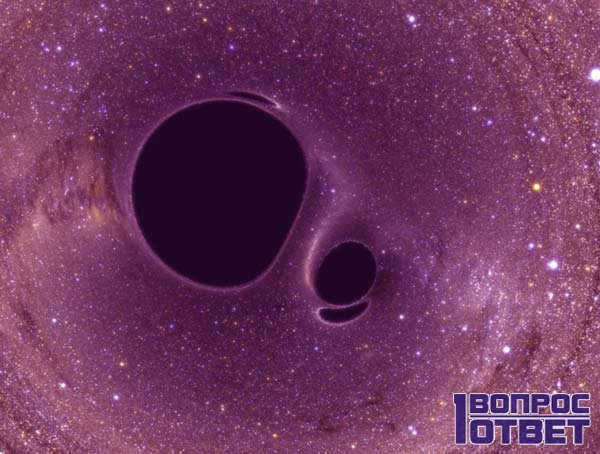
Methods of Observation
Modern scientific advancements have led to the development of various techniques for exploring the universe:
- Optical ground-based telescopes. These were one of humanity’s earliest inventions used for observing stars. These telescopes can only detect the visible spectrum of radiation and require clear, nighttime conditions for optimal use. Additionally, to ensure high-quality observations, it is necessary to position the telescope away from city lights in order to minimize atmospheric light interference and enhance star visibility.
- Electronic ground-based telescopes. These telescopes represent a more advanced technological counterpart to the original models. They are capable of capturing a wide range of radiation and can be used during the day. However, it is important to note that these telescopes are typically large in size and consume a significant amount of electricity.
- Orbital telescopes. Examples include the renowned Hubble telescope. Placing these telescopes in orbit greatly enhances their ability to detect various forms of radiation. Mission control centers on Earth are responsible for overseeing the operation of these stations. These telescopes capture the most stunning images of nebulae and faraway star clusters. However, launching and maintaining these stations in orbit comes with a hefty price tag. Nevertheless, the valuable data they provide makes the investment worthwhile.
- Automated interplanetary probes. The current stage of robotics development enables the deployment of unmanned spacecraft for research missions. These probes are equipped to measure radiation spectra, collect soil samples, and capture images. They maintain two-way radio communication, enabling research in locations inaccessible to humans. In many cases, these missions are one-way, meaning once a probe is launched, it will never return to Earth.
Despite the advancements in these technologies, they still do not provide a comprehensive means of exploring remote celestial bodies.

Categories of celestial objects
The vastness of the universe astounds the minds of many individuals, and rightfully so. Examine this chart of astronomical entities arranged in ascending order of mass, from lightest to heaviest.
The tiniest entities. They can vary in size, ranging from minuscule grains of sand to sizable pieces of gravel. Collectively referred to as dust.
A substantial chunk of rock or ice. Typically found within asteroid clusters encircling planets or at the periphery of star systems.
An expeditious and sizable celestial body. Comets have elliptical orbits around stars and leave behind a distinctive trail of gas and dust.
Satellites that orbit around planets. The most renowned satellite is Earth’s moon.
A relatively recent classification of celestial objects. These planets are diminutive in size but possess a spherical shape and orbit around a star.
We inhabit a planet of this kind. Celestial bodies revolve around a star, devoid of any other significant space entities in their orbits, and occasionally possess moons.
Majestic planets, which exert a formidable gravitational force on surrounding objects, usually harbor numerous moons. These colossal entities include behemoths such as Jupiter or Saturn.
Massive celestial bodies that undergo fusion reactions within them, releasing energy in the form of various types of radiation, including visible light. Consequently, stars are categorized based on their mass and luminosity. Some stars can be immensely vast, millions of times larger than our own Sun. Meanwhile, planets orbit around these stars.
Nebulae and clusters
Due to their immense distances, remote objects appear to us as singular points. Even though a nebula may consist of numerous small objects, they are still classified as a single entity.
Black holes can be so massive that they outweigh entire galaxies. The immense gravitational force they possess is so strong that even light particles, known as photons, are drawn towards them. As a result, light is unable to escape the confines of these cosmic entities.
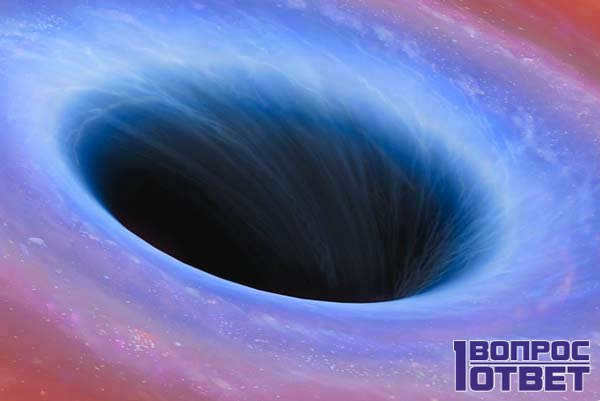
The Center of a Black Hole: Fiction vs Reality
Science fiction writers have always had a fascination with space and black holes are no exception. There are numerous imaginative concepts surrounding these mysterious entities, and here are a few examples:
- Black holes are believed to be the epicenter of space, sometimes referred to as a wormhole. Passing through one of these cosmic tunnels could transport you to a distant corner of the universe.
- Some speculate that black holes serve as gateways to alternate dimensions or parallel universes. Stepping through one of these portals would lead to a different reality, yet you would still remain in the same physical location.
- Another intriguing notion is that black holes might actually be intelligent life forms or remnants of highly advanced civilizations.
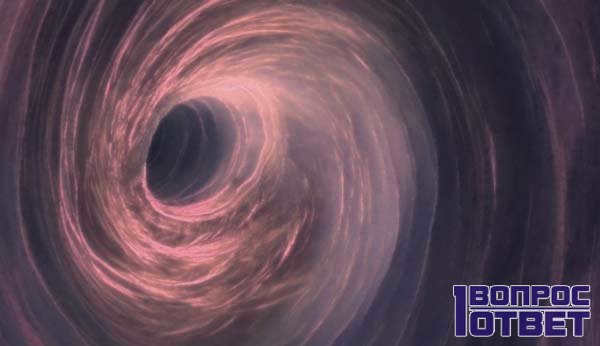
Here’s a video showcasing a research on the black hole situated in the heart of our galaxy, the Milky Way:
The Scientific Theory on the Central Component of a Black Hole
According to scientific theory, the black hole closest to our location is believed to be situated at the very core of our galaxy, known as the Milky Way. Although it lies far beyond our grasp, we can only observe it using telescopes.
Scientists hypothesize that black holes are incredibly massive and incredibly dense objects that exert a powerful gravitational pull, thus attracting any matter in their vicinity. However, other forms of radiation have also been detected. There is a theory suggesting that black holes gradually dissipate by emitting radiation as they consume their stored mass.
Another theory proposes that black holes act as mass consumers, in contrast to stars, which function as mass sources. In this manner, the Universe maintains a perpetual equilibrium.
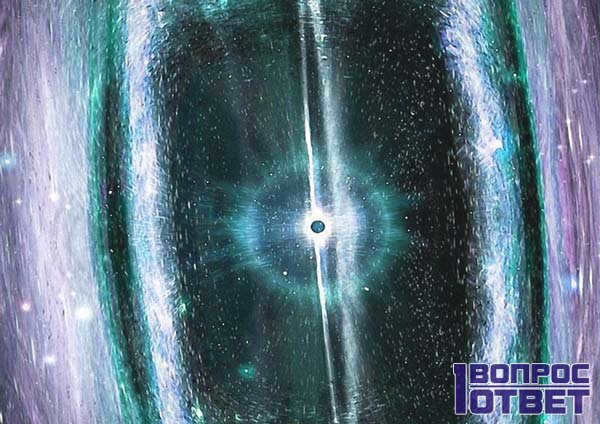
Presumptions and suppositions
A significant number of astronomers and astrophysicists have the belief that the core of the center is comprised of a compact material with an extremely high density and temperature. Conversely, others challenge this notion by presenting compelling arguments concerning rotational velocity and centrifugal forces.
It is not possible to affirm with absolute certainty what exists at the core of a black hole. It is plausible that in due course, astronomers and scientists will ascertain a definitive answer to this inquiry.
Video: unraveling the enigma of the heart of a black hole
In the following footage, the profound impact of a black hole on its surrounding entities is vividly showcased, shedding light on the elusive nature of its core:
While conducting research on a globular cluster located in close proximity to Earth, scientists were anticipating the discovery of a rare entity: an intermediate-mass black hole. However, their findings unveiled a cluster of small black holes with stellar mass instead. The comprehensive details of this study can be found in the esteemed journal, Astronomy and Astrophysics.
A globular star cluster is a dense collection of hundreds of thousands of stars, enclosed within a spherical structure that spans from twenty to several hundred light years in size. These stars were all formed simultaneously, originating from the same cloud of gas. The Milky Way currently houses approximately 150 of these clusters, although there may be additional unidentified ones. Ultimately, these celestial bodies are often referred to as “fossils” due to their early formation in the history of the Universe.
NGC 6397 is positioned approximately 7,800 light-years away from Earth and stands as an exemplar of such a cluster. It also happens to be one of the closest clusters to our planet. Recently, the Paris Institute of Astrophysics duo, Eduardo Vitral and Gary A. Mamon, directed their attention towards this particular cluster with the intent of investigating the potential existence of an incredibly uncommon entity within: an intermediate-mass black hole.
As the name suggests, these “intermediate masses” lie between stellar-mass black holes (which can reach up to a hundred solar masses) and supermassive ones (measuring several million, or even billions, of stellar masses) that are typically discovered within the cores of galaxies.
According to the researchers, these “intermediate” objects could be present within the gravitational core of globular clusters, around which stars congregate. The characteristics of NGC 6397 also indicate the possibility of it harboring one of these “intermediate masses” at its core.
To explore the potential existence of such an entity, the scientists relied on Hubble images of the cluster captured over multiple years. Additionally, they merged this information with data gathered by ESA’s Gaia satellite, which examines the positions, distances, and movements of stars. By utilizing all of this data, the scientists were able to approximate the distribution of mass within this cluster.
"We discovered compelling evidence of an imperceptible mass within the concentrated core of the globular cluster"," affirmed astronomer Eduardo Vitral. "Surprisingly, however, we were taken aback to find that this additional mass was not confined to a specific point, but rather dispersed across a broader region (constituting a few percent of the cluster’s overall size)".
We have knowledge that “dead” stars such as white dwarfs, neutron stars, and black holes have a higher density compared to main-sequence stars. As a result, they tend to move towards the center of these clusters, causing less dense stars to move outward.
In this case, the calculations performed by the researchers indicate that the hidden mass present in the cluster’s center is not an intermediate-mass black hole or a group of white dwarfs or neutron stars, but rather a concentration of black holes with stellar masses.
“Our study is the first to provide understanding of both the mass and size of what appears to be a predominantly black hole collection at the core of a collapsed globular cluster,” says Eduardo Vitral.
Are there any potential mergers on the horizon?
This research holds promise for future endeavors, as it has shed light on the presence of multiple black holes with stellar masses within globular clusters. Armed with this knowledge, astronomers can refine their investigations by eliminating clusters that exhibit similar behavior.
Another fascinating possibility is the potential convergence of these diminutive black holes, culminating in a merger. This collision could result in the formation of an intermediate-mass black hole. Moreover, the processes leading up to these mergers might generate detectable gravitational waves, which could be captured by our advanced instruments.
The topic of black holes and their nature is explored in this article from the perspective of yissidiology.
Disclaimer: This article represents the author’s personal opinion and may not align with the views and beliefs of the Isissidiology author
1. Black holes in the Universe
A cosmic entity known as a black hole is created when massive celestial bodies undergo gravitational compression. These objects were first theorized by the general theory of relativity and were given the name “black hole” in 1968 to describe a collapsed star.
Scientists have reached a conclusion that black holes don’t instantaneously appear in their current form and size, but rather gradually grow by consuming gas and stars from galaxies. Recent research indicates that giant black holes didn’t exist before the formation of galaxies, but instead developed alongside them, absorbing a portion of the mass from stars and gas in the central region of the galaxy. This implies that black holes in smaller galaxies are less massive, with masses of only a few million times that of the Sun. On the other hand, black holes in the centers of massive galaxies can reach billions of solar masses, with their final mass being established during the formation of the galaxy itself. In certain instances, black holes can expand not just by consuming gas from a single galaxy, but also by merging with black holes from other galaxies, resulting in the combination of their masses.
2. Structure of a black hole
When located far away from a black hole, space-time can be considered nearly flat, allowing light rays to travel in a straight line. However, as one approaches the black hole, the light rays start to experience significant deflection. As the light propagates through the highly curved region of spacetime, its “world line” becomes increasingly curved. In certain scenarios, it is possible to direct a beam of light in such a way that it becomes trapped in a circular orbit around the black hole. This region surrounding the black hole is often referred to as the “photon sphere” or “photon circle,” consisting of light particles moving along all possible circular orbits around the black hole. This concept was vividly portrayed in Christopher Nolan’s 2014 science fiction film Interstellar, visualizing the photon sphere as follows:
In 1916, shortly after Einstein released his gravitational field equations, the German astronomer Karl Schwarzschild discovered a precise solution that describes the spacetime geometry surrounding an ideal black hole. Schwarzschild’s solution depicts a black hole with spherical symmetry, consisting solely of mass. The hypothetical star that has collapsed to form this black hole is assumed to be non-rotating and devoid of any magnetic field or electric charge. The matter from this star will collapse inward, toward the center, creating a black hole with perfect symmetry.
To comprehend the essence of a Schwarzschild black hole, we can examine a massive star undergoing gravitational collapse. Suppose an imaginary observer is situated on the surface of a dying star that has depleted its nuclear fuel. Just before the collapse commences, our observer employs a powerful spotlight and directs its beams in various directions. Because the star’s matter is still dispersed across a relatively large volume of space, the gravitational field near the star’s surface remains rather feeble, causing the light rays to propagate in a straight or nearly straight line. However, once the collapse begins, the star’s matter starts compressing into a progressively smaller volume. As the star’s size diminishes, the gravitational force at its surface intensifies, leading to an increased curvature of space-time and the deflection of light rays from their previous rectilinear trajectories. Initially, the rays emitted from the spotlight at a slight angle to the horizon are bent downward toward the star’s surface. However, as the collapse progresses, the rays must be directed upward, closer and closer to the vertical, in order for them to escape from the star permanently. At the conclusion of the collapse phase, the observer will discover that no ray of light can evade the star, and all the rays will continue to alter their direction, ultimately descending onto the star. This signifies that the star has crossed its event horizon, and nothing, not even light, can escape from outside the event horizon.
3- The Development of Black Holes
Scientists possess data pertaining to two distinct categories of black holes: the first consists of black holes with stellar masses approximately 10 times greater than that of the Sun, while the second encompasses supermassive black holes, which are presumed to be situated at the centers of galaxies and possess masses ranging from hundreds of thousands to billions of times that of the Sun. However, the formation and existence of intermediate-mass black holes, which possess masses between 100 and 10,000 times that of the Sun, remains shrouded in mystery, and the evidence supporting the origin of these entities is highly contentious. To date, only one such black hole has been discovered within a single galaxy.
By analyzing X-ray data, a group of scientists has successfully identified two medium-mass black holes in the M82 galaxy, which is situated approximately 12 million light years away from our planet. Based on the radiation characteristics emitted by these black holes in M82, researchers have been able to estimate that the mass of the first black hole falls within the range of 12,000 to 43,000 times that of our Sun, while the second black hole’s mass ranges from 200 to 800 solar masses. The first black hole is positioned 290 light-years away from the center of the M82 galaxy, whereas the second black hole is located at a distance of 600 light years.
There is a theory that suggests a possible way supermassive black holes are formed is through a chain reaction when stars collide with compact star clusters. This collision results in the accumulation of extremely massive objects, which eventually evolve into intermediate-mass black holes. These “intermediate” black holes are then gravitationally pulled towards the galaxy’s center and merge with the supermassive black hole already present there. Up until now, astronomers were uncertain if it was possible for two intermediate-mass black holes to coexist within the same galaxy.
During the period from 1992 to 1998, the team of researchers at the Max Planck Institute for Extraterrestrial Physics in Garsching, Germany, led by A. Eckart, conducted a study on the motions within the central region of our Galaxy. Using a specialized spectrometer, they were able to measure the velocities of 200 stars. The results of their research revealed that the stars located closer to the object Sagittarius A, previously associated with “black holes,” were found to have the highest velocities. These stars, which were only five light days away from Sagittarius A, were observed to orbit the center of the Galaxy at speeds exceeding 1000 km/s. Further calculations demonstrated that such high velocities could only be achieved if there was an object in the core of the Galaxy with a mass of 2.6 million times that of the Sun, and a density equivalent to squeezing 2 trillion suns into a single cubic light-year.
There is only one unique characteristic possessed by these properties, which is the presence of a “black hole” that has the ability to absorb all matter within its sphere of influence for several million years. A.M. Ghez (A.M. Ghez; University of California, Berkeley) announced similar findings during the conference organized by the American Astronomical Society (Washington, 1998). Alongside her colleagues, Ghez conducted observations within the same infrared frequency range (2 microns) as Eckart, but utilized the more advanced 10-meter Keck Telescope located on Mount Mauna Kea (Hawaii). Their findings revealed that stars positioned twice as close to the center of the Galaxy compared to those observed by the German astronomers were moving at a speed of 3000 km/sec. According to Ghez, such velocity can only be achieved by stars under the influence of a “black hole” with a mass equivalent to 2.7 million suns. These conclusions drawn by both research groups can be deemed nearly identical when considering the immense scales involved – there is an enormous “black hole” situated at the center of our Galaxy.
4. Research conducted by scientists on black holes
By studying the rotation of a black hole, one can determine the amount of matter it has absorbed over time and understand how rotational momentum is related to the ejection of matter in the form of an axial jet. Tsang’s research suggests that there are two rapidly rotating black holes in our Galaxy that emit jets of high-energy particles at a similar speed to the black hole itself. In late 1997, scientists observed fluctuations in the X-ray intensity of these objects, which led to the discovery of an even more surprising phenomenon: the gas and dust particles near the black holes undergo a periodic motion known as precession. This means that the axis of the particles’ vortex is not stationary but rotates around another axis.
During a different investigation, a fascinating system consisting of a star and a black hole named GRO J1655-40 was discovered. This system is situated approximately 10,000 light years away, within our own Milky Way galaxy. Its discovery occurred in 1994 and caught the attention of astronomers due to intense X-ray bursts and radio wave bombardment. These phenomena were caused by the black hole pushing gases towards its companion star, which was located 12 million kilometers away. Scientists from Spain and America embarked on a detailed examination of the companion star, hoping to find traces of the black hole’s formation process. In August and September of 1994, observations of GRO J1655-40 unveiled that the ejected gas streams were traveling at velocities of up to 92% the speed of light, providing partial evidence for the presence of a black hole. This groundbreaking discovery was the first solid support for the theory that some black holes originate from supernovae, as the observed phenomena could not have originated from a star visible to astronomers.
The most recent achievement in astrophysics is the capture of the initial photograph of the supermassive black hole situated at the heart of the M87 galaxy. This remarkable image was acquired through the utilization of the Event Horizon Telescope, a global network that combines the power of eight different observatories spread across the globe. By effectively creating a virtual telescope spanning approximately 10,000 kilometers, scientists were able to successfully capture this groundbreaking image. The black hole itself is located an astounding 53 million light-years away from our planet and measures a staggering 40 billion kilometers in diameter. Additionally, its mass is estimated to be 6.5 billion times that of our sun.
5. The connection between black holes and quasars
Due to the colossal mass of a black hole, which is considered “monstrous” by our standards, the gravitational force near its center becomes infinitely strong when it reaches the gravitational radius (Schwarzschild sphere). As a result, black holes consume any matter or energy that comes near them, possessing an immense amount of potential energy within our space-time continuum. While scientists view neutron stars and black holes as the sources of the most powerful deformations (or “warps”) in space and time, they differ in their significance from the perspective of hissidiology. The former represents a fractal-like dynamic of frequency transformation from elementary particles to subelementary particles, while the latter acts as a mechanism for transforming the synthesized properties of elementary particles into the dynamics of superuniversal fields.
Quasars, which are giant black holes, not only absorb energy but also actively emit it. The amount of energy they radiate is much greater than that of many galaxies. This continuous energy exchange is made possible by a single mechanism: the quasar emits energy while the black hole absorbs it. To illustrate this mechanism, we can compare it to a swimming pool’s water supply system: whatever amount of water is added is simultaneously poured back. The black hole, through its powerful gravitational attraction, draws in a massive amount of excess energy potential (elementary particles). From the perspective of hissidiology, quasars (which operate in the 4-5-dimensional range and are similar to the formation of neutron stars but at the boundary where superuniversal particles transition into elementary ones) immediately return to us the same amount of energy, but in a higher frequency state, from the “lower” resopazons of 4-5-dimensionality.
By means of quasars and black holes, there is a constant flow of high-frequency energythrough the radiation mechanism, and via the absorption of matter by black holes (or through the same quasars), the flow of material energy from 3-4-dimensional continuums is qualitatively transformed (annihilated) (the electron loses its binding to the nucleus, resulting in its decay; photons, gluons, and quarks that are freed as a result of decay then return to superuniversal particles of 4-5th dimensions). At the same time, identical processes occur through the “fractal” dynamics of neutron stars, but only involving transformations of elementary particles from 3-4th dimensions into subelementary particles of 2-3rd dimensions. Through the dynamics of supernovae stars, the reverse occurs – higher resopazons of 2-3rd dimensions transform into lower levels of 3-4th dimensions.
Billions of dark voids, engulfing equivalent quantities of energy from alternate dimensions opposite to ours, simultaneously emit it back into our own, via quasars. Conversely, dark voids present in our own dimensions, enveloping rays of light in a protective “cocoon” and actively absorbing energy from our dimensions, promptly return it in equal measure to the systems of opposing dimensions through stars that manifest as quasars “there”. Additionally, massive dark voids serve as potent accelerators for elementary particles, organizing 3-4-dimensional spaces, propelling them to exceedingly high velocities. For instance, the energy of protons escalates within dark voids to immense magnitudes (exceeding 100 trillion eV), surpassing the required energy thresholds for the formation of our own matter. In certain cases, collisions between accelerated protons and low-energy protons of cosmic hydrogen can generate short-lived pions (or pi mesons), which, as they “decay”, emit intrinsic high-energy gamma rays.
6. Microcosm Black Holes and Wormholes
In a manner analogous to the presence of immense black holes in the universe, comparable mechanisms of qualitative transformation also exist at the atomic scale of energy-information interaction between sub-elementary, elementary, and superuniversal particles. The “interatomic space” that exists between electrons and protons is leveled, corrected, and maintained through the utilization of a vast number of counterparts to “quasars,” “black holes,” “neutrons,” and “supernova stars” that are unique to this particular manifestation within the microcosm. Simultaneously, at certain levels of energy-information interaction of different qualities and directions, there is also a significant absorption of specific energy, while at other levels, there is an output of this energy to subsequent levels of interaction. Each interatomic space possesses “its own galaxies, stars, and planets” through which various configurations of continuums with different dimensions are resonantly interconnected. The “boundary” and “filtering-emitting” properties of individual black holes and quasars generate interdimensional energy-information flows that facilitate the interpenetration from one type of reality to another.
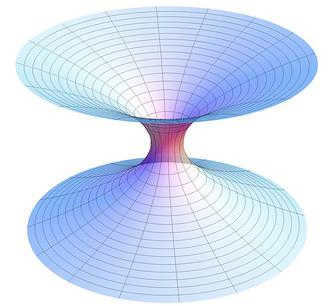
A wormhole is different from a black hole because it does not have an event horizon. Matter is unable to pass through the wormhole, but light is able to, and the light that is emitted has a distinct angular distribution. This means that if we were to observe the entrance of the wormhole, we would see a ring of light that gets brighter towards the outer circumference. In the center of this ring, in theory, we would be able to see the light coming from other galaxies on the opposite side of the wormhole.
7. Conclusion
Black holes have unique properties that make them quite remarkable objects. Despite significant progress in scientific research, there is still much to be explored about the nature of black hole space and time. This abstract has analyzed information from scientific sources and new insights from hissidiology, which may contribute to further advancements in black hole research in the future.
The dissidiological concept of black holes aligns well with current scientific ideas within the 3-4 dimensional range. It also provides a broader perspective on these objects within the boundary zones of 2-3 and 4-5 dimensions, offering valuable clues and ideas for the development of existing models and theories.
References:
2. Universal popular science online encyclopedia
3. Nikolaev G. Black holes of the Universe. – 1998, № 5.





